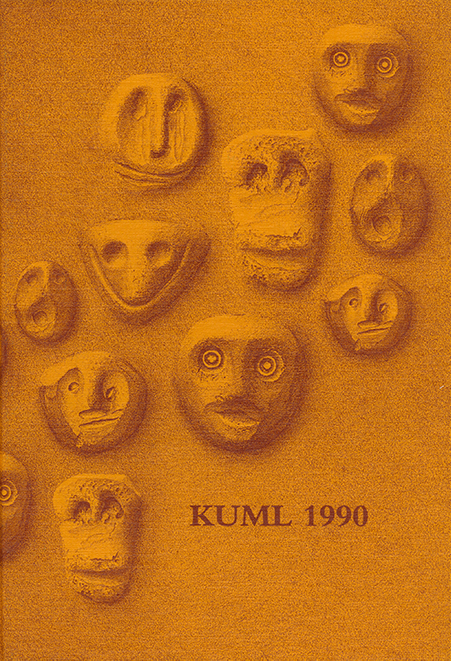Karby on Mors, a Viking village
DOI:
https://doi.org/10.7146/kuml.v37i37.111173Keywords:
Karby, Mors, Viking villageAbstract
Karby on Mors, a Viking village
The village of Karby lies on the SW coast of Mors, an island in the western Limfjord in north Jutland. The present village still has its Romanesque church, and north of it the settlement stands on a broad beach ridge with the low meadows along the fjord to the west and low-lying marshland to the east. Two streams join together east of the village and run through the ridge to the fjord (fig. 1).
By a chance discovery it was learned in 1976 that the village lay on a thick occupation layer from around 700 A.D. and later, which was interpreted on the basis of a small excavation as an early trading site (1).
The excavations were resumed in 1986, 1987 and 1988 as a collaboration between Morslands Historical Museum and Forhistorisk Museum, Moesgård in Århus, whereby altogether 740 m2 were excavated at five points in the part of the beach ridge where borings had shown that occupation layers were present (fig. 1). It was found chat the actual settlement levels had a total depth of 0.3 to 0.7 m and could be devided into periods I-IV, covering ca. 700-1100 A.D. Over them lay everywhere a soil layer a meter thick (figs. 2-3) with scattered finds from the 13th-19th centuries, which is called period V.
The new excavations revealed in the settlement layers a number of postholes and hollows, three of which may be regarded as pithuts, and also small parts of two other houses and the remains of a clay oven and some long narrow trenches (fig. 4). There were also 17 circular trenches (fig. 5-6). Similar ditches are known from the site of Dalgård on Mors (2) and other sites in Denmark (3,4), and from cemeteries in Ribe and northern Germany (5). In Karby they belong partly to period IV and partly to period III or earlier, but no satisfactory explanation can be given of their function, as no graves or anything of note was found either in the trenches or inside the circles.
As already said, the layers were divided into periods I-IV against the background of the pottery, while the covering soil layer is ca lied period V as a whole (figs. 7-11). As fig. 7 shows, not all periods were represented in all the cuttings, and the quantity of finds was low. Apart from pottery there were only a few objects -occasional iron knives and scattered nails, two rectangular fibulae, some spindle whorls, and in the 1986-88 excavations 9 fragments of Norwegian soapstone, ca. 10 fragments of rotary querns of Norwegian micaschist, some with red garnets, and finally two hones and a few simple beads.
The precise dating of these periods is difficult as it has to be based mainly on the pottery, which is small in quantity and includes few characteristic forms. The best indication is the rectangular fibula from period II (fig. 9), which is dated to ca. 725-800 (6). It is interesting that the hemispherical pots that appear at Karby in period I and go out of use in period III, are elsewhere datable to ca. 700-1000 (7,7,9). To judge from this, period I seems to have begun at around 700, and period III to end at around 1000. A thermoluminescence dating to 1040±50 years from period IV agrees with this.
The finds and the limited number of them do not suggest that Karby was a trading site, not even of strictly local character like Sønderø on Roskilde Fjord (15). It should be seen as a farming village, and its position near the coast makes it likely that the inhabitants also supported themselves by fishing. The import of soapstone vessels in period III and of rotary querns of micaschist in period IV points to trading contracts with Norway. Commerce in everyday means of production like these increased significantly during the Viking period (10,11,12), but the finds do not show that Karby was a trading site itself. Limfjorden in Viking times was an important navigational route from Denmark to western Europe and Norway, as it probably then was open both at the west and the north, but so far no sure Viking trading sites have been found along its shores (13,14). The meter-thick topsoil which covers the old settlement formed later as a result of a special method of manuring (16,17). In these later centuries the village drew together to the area around the church (fig. 12) and the old occupation site was turned into fields for agriculture.
Hans Jørgen Madsen
Per Vegger
Downloads
Published
How to Cite
Issue
Section
License
Fra og med årgang 2022 er artikler udgivet i Kuml med en licens fra Creative Commons (CC BY-NC-SA 4.0).
Alle tidligere årgange af tidsskriftet er ikke udgivet med en licens fra Creative Commons.


